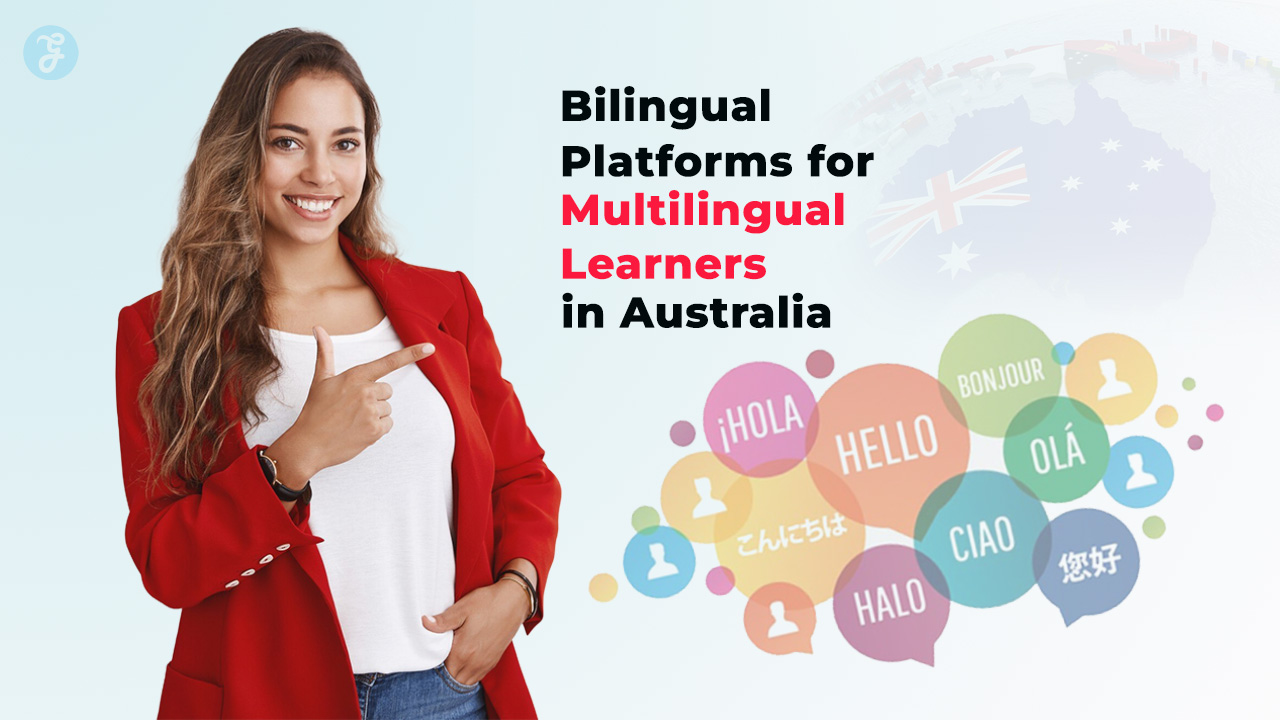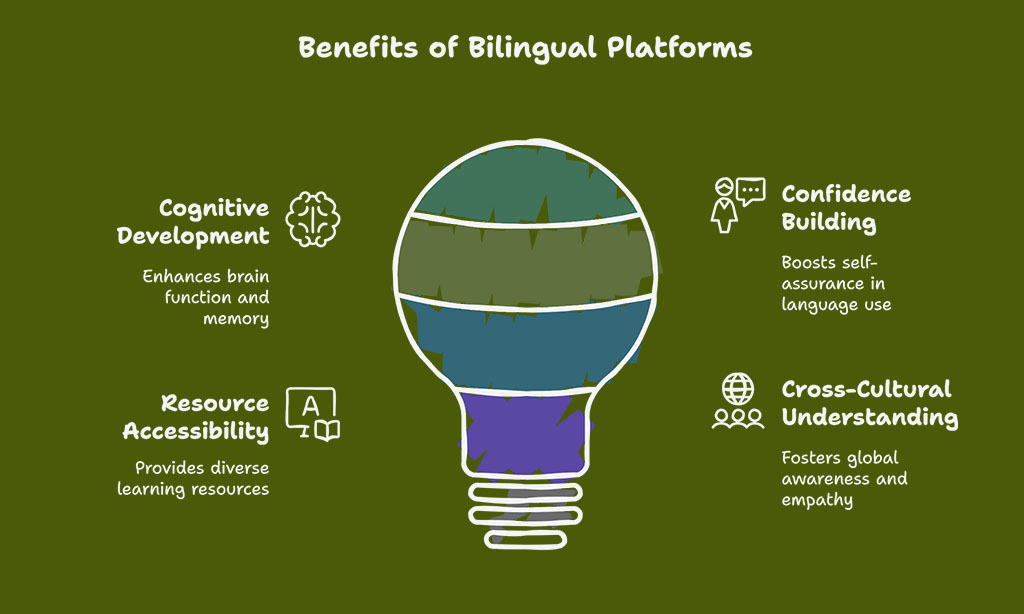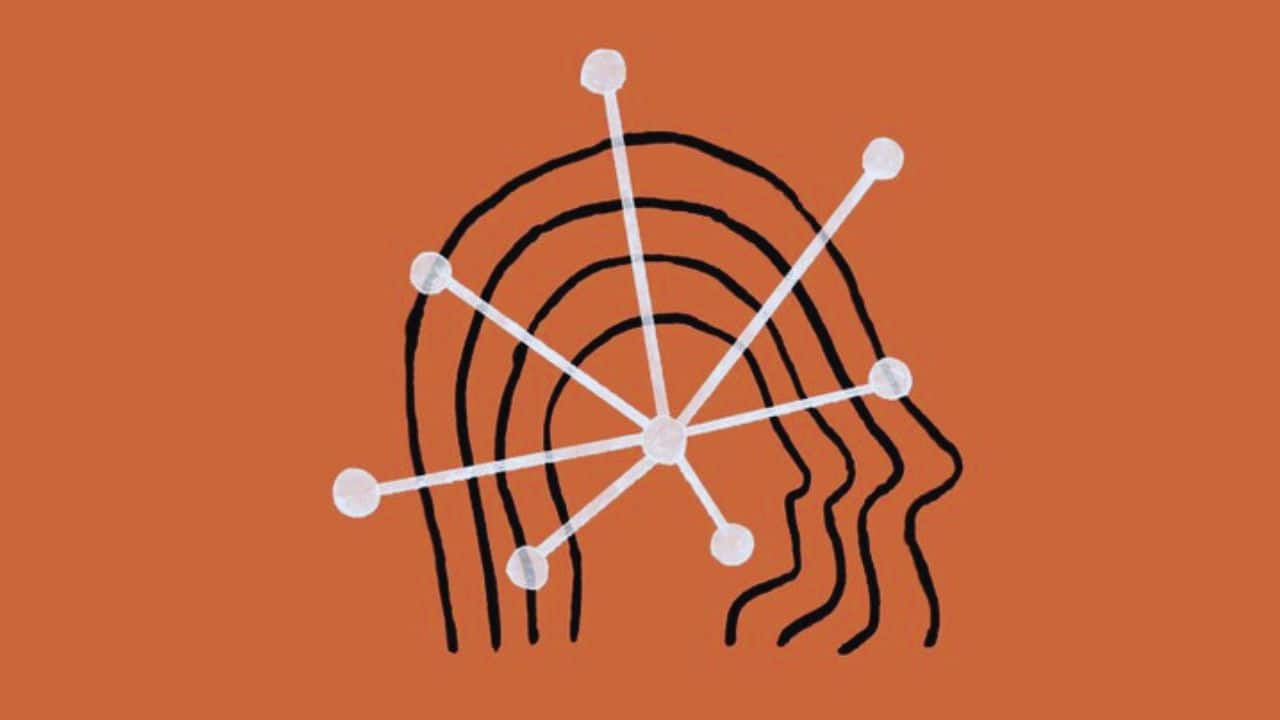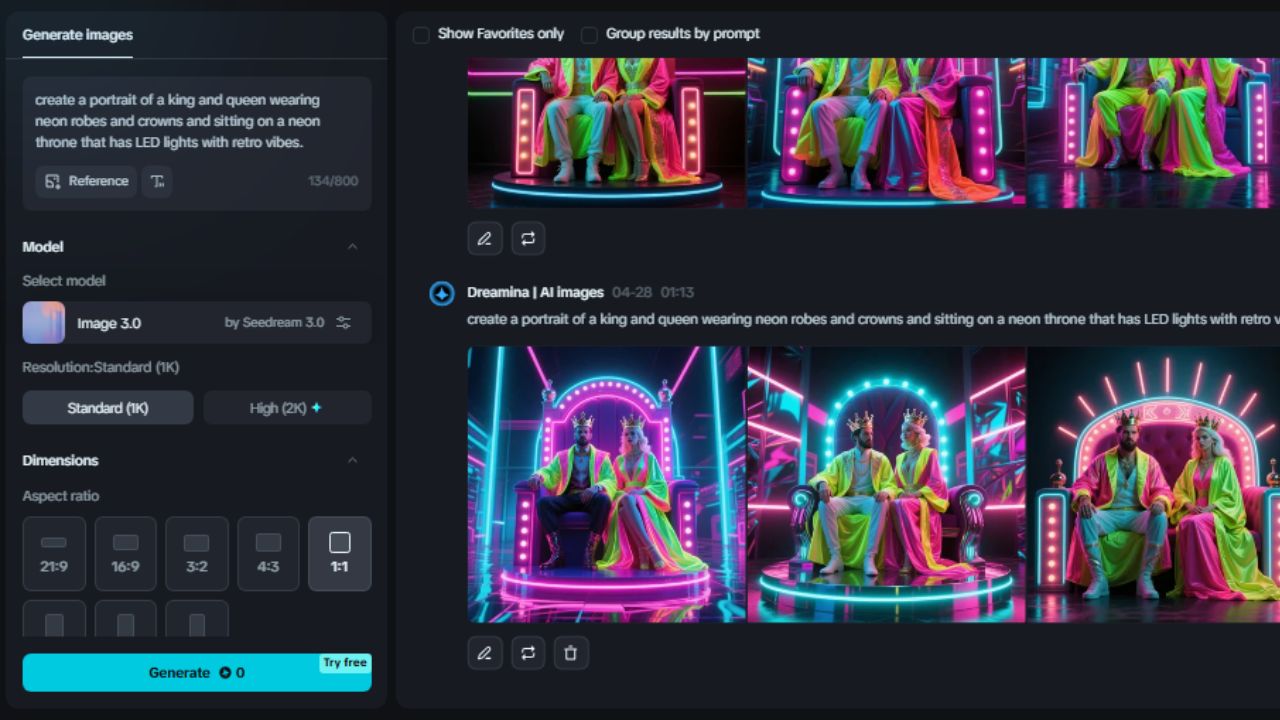Australia, a country celebrated for its cultural diversity, has become a hub for multilingualism, with nearly 21% of the population speaking a language other than English at home.
The increasing need for bilingual education in this context makes it essential to provide learners with effective tools to hone their language skills.
This article explores 15 bilingual platforms for multilingual learners in Australia, offering a variety of resources to help them become fluent in both English and other languages.
Whether you are a student, a professional, or someone who simply wants to expand their language skills, these platforms provide a range of learning experiences that cater to different needs, preferences, and proficiency levels.
Why Bilingual Platforms Matter for Multilingual Learners in Australia
In a multicultural country like Australia, where over 200 languages are spoken, bilingual platforms have become a critical educational resource for learners. As a multilingual society, Australia faces unique challenges in language learning, including language retention and fluency in both native and foreign languages.
Bilingual platforms help to bridge this gap by offering resources that support learners in both formal and informal settings, enhancing their linguistic capabilities while promoting cultural understanding.
The Growing Need for Multilingual Education
Recent studies reveal that more than one in five Australians speaks a language other than English at home. As the world becomes increasingly interconnected, multilingualism has evolved from an optional skill to a necessity. Multilingual learners in Australia face the challenge of balancing their education in English with the preservation of their first language. This is especially true for students of immigrant backgrounds who need bilingual resources to maintain fluency in their native languages while excelling in their studies.
Benefits of Bilingual Platforms for Learning
Bilingual platforms provide a comprehensive approach to language learning by incorporating both formal educational tools and informal, conversational practice. They allow learners to:
- Enhance cognitive development and memory retention.
- Build confidence in using the language in practical, real-world situations.
- Access resources that cater to different learning styles, such as visual, auditory, or kinesthetic learners.
- Improve cross-cultural understanding, which is crucial in a globalized world.
15 Top Bilingual Platforms for Multilingual Learners in Australia
Now that we understand the significance of bilingual platforms, let’s explore the 15 top bilingual platforms for multilingual learners in Australia, which offer a mix of features, languages, and learning methods.
Below is an expanded list, including tables with key features, pricing, and additional relevant insights for each platform.
1. Duolingo
Duolingo is a popular, free language-learning app that is widely known for its gamified approach to learning. It offers over 30 languages, from widely spoken ones like Spanish and French to lesser-known languages such as Welsh and Navajo. Duolingo is suitable for learners at any proficiency level and particularly appeals to casual learners who want to practice on-the-go.
Best Features:
- Gamified learning: Encourages regular practice with levels and rewards.
- Free access: All essential features are available for free, with the option to upgrade for an ad-free experience.
- Engaging design: Makes learning fun through challenges and streaks.
| Key Features | Details |
| Languages | 30+ languages, including English, French, and Arabic |
| Level | Beginner to intermediate |
| Pricing | Free [Premium features available] |
| Platform | iOS, Android, Web |
Pros and Cons:
- Pros: Interactive, fun, easy to use.
- Cons: Limited advanced content, primarily for beginners.
Example:
A recent study of Duolingo’s users showed that the app significantly increased vocabulary retention for learners after just a few weeks of use. This makes Duolingo an excellent choice for casual learners who need a fun and flexible tool.
2. Rosetta Stone
Rosetta Stone is one of the most reputable platforms for language learning, known for its immersive method that helps learners acquire languages through context rather than translation. It is particularly beneficial for multilingual learners who want to strengthen their language skills without relying on their first language.
Best Features:
- Immersive learning: Learners are exposed to the language directly, with minimal translation.
- Speech recognition technology: Helps learners improve their pronunciation.
- Structured lessons: Divided into thematic units, focusing on real-life contexts.
| Key Features | Details |
| Languages | 24+ languages, including English, Spanish, and Mandarin |
| Level | Beginner to advanced |
| Pricing | $11.99/month [subscription-based] |
| Platform | iOS, Android, Web, Desktop |
Pros and Cons:
- Pros: Immersive, thorough, excellent for pronunciation.
- Cons: Expensive, may be too structured for some learners.
Example:
Rosetta Stone’s immersion method has been used in over 150 countries, with companies like NASA and the US Army using it to train employees. This showcases its credibility in delivering effective language-learning solutions.
3. Babbel
Babbel is a subscription-based platform that focuses on teaching practical, conversational skills. It offers more structured lessons compared to free apps like Duolingo, making it ideal for learners who want to learn real-life vocabulary, grammar, and sentence structures.
Best Features:
- Real-world conversation focus: Lessons focus on practical, everyday language use.
- Structured learning paths: Divided by topics such as work, travel, or social interactions.
- Cultural context: Each lesson includes cultural insights about the language.
| Key Features | Details |
| Languages | 14 languages, including German, French, and Portuguese |
| Level | Beginner to advanced |
| Pricing | $12.95/month [subscription-based] |
| Platform | iOS, Android, Web |
Pros and Cons:
- Pros: Practical, structured, offers cultural insights.
- Cons: Expensive for a language app, limited free access.
Example:
A case study from Babbel revealed that 73% of users reported feeling more confident in speaking a new language after just 5 hours of learning. This makes Babbel an ideal choice for learners who want to see quick improvements.
4. Busuu
Busuu is another popular language-learning platform that emphasizes interactive learning. It offers personalized feedback from native speakers, which is valuable for multilingual learners looking to improve their conversational skills.
Best Features:
- Native speaker feedback: Learners get personalized corrections.
- Conversation practice: Practice speaking with native speakers through the community.
- Track progress: Includes personalized study plans based on learner goals.
| Key Features | Details |
| Languages | 12 languages, including English, French, and Italian |
| Level | Beginner to intermediate |
| Pricing | Free [Premium features available] |
| Platform | iOS, Android, Web |
Pros and Cons:
- Pros: Personalized feedback, social learning.
- Cons: Free version is limited, premium required for full access.
Example:
Busuu recently introduced its new “real-life scenario” exercises, which have been shown to boost learners’ confidence by simulating actual conversations in various situations, such as ordering food in a restaurant or asking for directions.
5. Memrise
Memrise combines elements of gamification with spaced repetition to help learners retain new vocabulary. It uses real-world video clips to showcase how native speakers use language in everyday settings, making it a fun and effective tool for improving speaking and listening skills.
Best Features:
- Real-world video clips: Learners see native speakers using language in natural settings.
- Spaced repetition system [SRS]: Helps retain vocabulary and phrases.
- Fun and engaging: Interactive lessons with challenges and rewards.
| Key Features | Details |
| Languages | 16 languages, including Chinese, Spanish, and Italian |
| Level | Beginner to advanced |
| Pricing | Free [Premium features available] |
| Platform | iOS, Android, Web |
Pros and Cons:
- Pros: Engaging, real-world language exposure.
- Cons: Limited grammar-focused lessons.
Example:
Memrise has garnered positive reviews for its ability to help users improve their vocabulary retention. A study showed that users who practiced daily saw a 30% improvement in word recall after just one month of use.
6. Lingoda
Lingoda is an online language school offering live, instructor-led classes in English, German, Spanish, and French. Known for its structured approach, Lingoda offers learners access to live lessons that focus on speaking, grammar, and vocabulary. It’s ideal for learners who prefer real-time interaction with native teachers.
Best Features:
- Live classes with native speakers: Real-time interaction fosters engagement and immediate feedback.
- Flexible class schedules: Classes available 24/7, allowing learners to choose times that fit their busy schedules.
- Structured curriculum: Comprehensive lessons in grammar, vocabulary, reading, writing, and speaking.
| Key Features | Details |
| Languages | English, German, Spanish, French |
| Level | Beginner to advanced |
| Pricing | $8.99 per class [monthly subscription available] |
| Platform | iOS, Android, Web |
Pros and Cons:
- Pros: Personalized feedback, structured curriculum, flexible schedules.
- Cons: More expensive compared to other platforms, only focuses on four languages.
Example:
Lingoda’s “Sprint” challenge offers learners the opportunity to take 30 classes in 30 days for a certificate upon completion. This incentivizes consistent learning, with many users reporting significant progress in speaking and fluency by completing this challenge.
7. Pimsleur
Pimsleur is an audio-focused language learning platform that uses a proven method of spaced repetition to teach languages. It’s particularly useful for learners who want to focus on speaking and listening, offering a more immersive experience for those constantly on the go. Pimsleur’s method is often praised for its effectiveness in developing conversational skills.
Best Features:
- Audio-based learning: Emphasizes speaking and listening to aid in conversational skills.
- Spaced repetition: Reinforces vocabulary and grammar through repeated exposure.
- Global language coverage: Offers courses in over 50 languages, including niche and regional dialects.
| Key Features | Details |
| Languages | 50+ languages, including English, Mandarin, and Arabic |
| Level | Beginner to intermediate |
| Pricing | $14.95/month [subscription-based] |
| Platform | iOS, Android, Web |
Pros and Cons:
- Pros: Excellent for auditory learners, great for on-the-go learning, broad language selection.
- Cons: Lacks visual aids and written content, focuses heavily on listening and speaking rather than reading and writing.
Example:
A study from the University of Maryland found that learners using Pimsleur’s method were able to carry on basic conversations in their target language after just 30 days of daily practice, highlighting its efficiency in practical language learning.
8. Tandem
Tandem is a language exchange app that connects learners with native speakers around the world for text, voice, and video chats. The platform is designed to facilitate real conversations, allowing users to practice speaking with real people in real-time. Tandem is perfect for learners who want authentic language experiences and feedback from native speakers.
Best Features:
- Native speaker exchange: Users can chat with native speakers to improve their speaking and listening skills.
- Multi-language options: Supports over 150 languages, making it a versatile tool for multilingual learners.
- Text, voice, and video chat: Provides multiple communication modes to enhance learning.
| Key Features | Details |
| Languages | 150+ languages, including English, Spanish, and Japanese |
| Level | Beginner to advanced |
| Pricing | Free [Premium features available] |
| Platform | iOS, Android |
Pros and Cons:
- Pros: Real-time conversations, diverse languages, community-driven.
- Cons: Can be challenging for beginners, occasional language mismatches in partners.
Example:
Tandem’s success stories include learners who have gone from zero proficiency in their target language to holding confident conversations with native speakers within just three months of regular practice.
9. HelloTalk
HelloTalk is another social language-learning app, focusing on text, voice, and video communication between language learners and native speakers. It’s known for its chat function that allows users to send text, audio, and even images for contextual language practice, offering instant corrections and translations.
Best Features:
- Real-time chat with native speakers: Provides an opportunity for authentic language immersion through texting and speaking.
- Translation and transliteration tools: These features help bridge the gap between different languages.
- Community-based learning: Learners can share tips, corrections, and resources within the app.
| Key Features | Details |
| Languages | 150+ languages, including French, English, and Korean |
| Level | Beginner to advanced |
| Pricing | Free [Premium features available] |
| Platform | iOS, Android |
Pros and Cons:
- Pros: Immersive, real-time language practice, easy-to-use.
- Cons: Some users report issues with finding qualified partners for more advanced learning.
Example:
In a recent survey, HelloTalk users reported a 60% improvement in their conversational skills after using the platform for just 6 weeks, underscoring its effectiveness for developing fluency.
10. Memrise
Memrise offers a learning experience that combines gamified lessons with authentic content, such as videos of native speakers. Memrise focuses heavily on helping learners improve their listening and vocabulary skills through interactive and engaging content. The platform supports over 16 languages, including French, Spanish, Italian, and Chinese.
Best Features:
- Native speaker videos: Provides real-life video clips of native speakers using language in natural contexts.
- Spaced repetition: A method proven to help improve memory retention.
- Gamification: Encourages learning through interactive challenges and rewards.
| Key Features | Details |
| Languages | 16 languages, including French, Chinese, and Japanese |
| Level | Beginner to advanced |
| Pricing | Free [Premium features available] |
| Platform | iOS, Android, Web |
Pros and Cons:
- Pros: Fun, engaging, great for vocabulary and listening skills.
- Cons: Limited grammar coverage, higher-level content can be lacking.
Example:
Memrise uses the “real-world” immersion approach to teach languages, and in a case study, learners who used Memrise for 3 months showed a 40% increase in vocabulary retention compared to those using traditional textbook methods.
11. Mango Languages
Mango Languages is a comprehensive online language-learning platform offering courses in over 70 languages. Its focus is on conversational skills, integrating real-world dialogue, cultural context, and advanced speech recognition technology. Mango Languages is an ideal choice for learners who want a robust, immersive language-learning experience, focusing on practical application.
Best Features:
- Real-world conversations: Focuses on practical language use, preparing learners for real-life situations.
- Cultural context: Provides insights into culture, customs, and etiquette to help learners understand the language in context.
- Speech recognition technology: Helps learners improve pronunciation and fluency.
| Key Features | Details |
| Languages | 70+ languages, including Arabic, Russian, and Hindi |
| Level | Beginner to advanced |
| Pricing | $19.99/month [subscription-based] |
| Platform | iOS, Android, Web |
Pros and Cons:
- Pros: Includes cultural context, extensive language offerings, real-world conversations.
- Cons: Subscription-based, may be overwhelming for beginners due to its depth.
Example:
Mango Languages’ integration of cultural lessons helps students understand how to use language appropriately in different settings. One study found that learners who took the cultural lessons alongside the language course were 40% more likely to retain phrases in real-world conversations.
12. LingoDeer
LingoDeer is a language-learning app designed specifically to teach Asian languages such as Japanese, Korean, and Chinese. It’s a great choice for learners who want a comprehensive approach to grammar, vocabulary, and sentence structure, particularly for languages with complex writing systems. LingoDeer uses engaging, interactive lessons to teach the language systematically.
Best Features:
- In-depth grammar lessons: Breaks down complex grammar rules step by step.
- Asian language focus: Specializes in languages that don’t rely on the Latin alphabet, offering a more structured approach than other apps.
- Offline access: Provides learners the ability to study without needing internet access.
| Key Features | Details |
| Languages | Japanese, Korean, Chinese, and more |
| Level | Beginner to advanced |
| Pricing | $9.99/month [subscription-based] |
| Platform | iOS, Android, Web |
Pros and Cons:
- Pros: Deep focus on grammar, excellent for learning Asian languages.
- Cons: Limited language options, not suitable for learners focusing on European languages.
Example:
LingoDeer’s effectiveness in teaching Japanese has been highlighted by users, with one learner mentioning they were able to hold basic conversations after completing just a few months of lessons, particularly due to the platform’s detailed explanation of kanji characters.
13. italki
italki connects learners with professional tutors from all over the world for one-on-one language lessons. With over 130 languages available, italki allows students to select teachers based on their teaching styles, schedules, and pricing, making it an excellent platform for learners who want tailored, one-on-one lessons with native speakers.
Best Features:
- Personalized lessons: Choose from a wide range of tutors with different teaching styles and backgrounds.
- Flexible pricing: Affordable lessons with teachers from various countries at different price points.
- Video lessons: Available for learners to see tutors in action before booking.
| Key Features | Details |
| Languages | 130+ languages, including English, French, and Arabic |
| Level | Beginner to advanced |
| Pricing | $10–$30 per lesson [varies by tutor] |
| Platform | iOS, Android, Web |
Pros and Cons:
- Pros: Highly personalized, flexible scheduling, wide tutor selection.
- Cons: Can be costly for regular lessons, depending on tutor rates.
Example:
A student who took French lessons on italki for several months reported a dramatic improvement in conversational French, noting that personalized, real-time corrections from native speakers were particularly helpful.
14. FluentU
FluentU uses real-world videos—such as music videos, movie trailers, and interviews—to teach languages. The platform is designed to help learners improve their listening and comprehension skills by exposing them to natural conversations in their target language. It’s great for learners who want to immerse themselves in the language through authentic, native content.
Best Features:
- Real-world video content: Includes clips from movies, news, and music to expose learners to the language in its natural context.
- Interactive subtitles: Learners can click on words to see definitions, pronunciations, and example sentences.
- Personalized quizzes: Helps reinforce vocabulary and grammar through quizzes based on the videos.
| Key Features | Details |
| Languages | Spanish, French, German, Chinese, and more |
| Level | Beginner to advanced |
| Pricing | $30/month [subscription-based] |
| Platform | iOS, Android, Web |
Pros and Cons:
- Pros: Immersive, authentic content, great for improving listening and vocabulary.
- Cons: Limited language options, subscription-based.
Example:
A user who practiced Spanish with FluentU shared that watching short, authentic videos helped them recognize slang and regional accents, leading to a more natural and nuanced understanding of the language.
15. Anki
Anki is a powerful flashcard app used by language learners worldwide to retain vocabulary and concepts. Using spaced repetition algorithms, Anki ensures that learners review vocabulary at optimal intervals to enhance retention. While it’s not a full course, Anki is an excellent supplement to other language platforms.
Best Features:
- Spaced repetition: Optimizes review intervals for better memory retention.
- Customizable flashcards: Learners can create their own flashcards or use pre-made decks created by other users.
- Cross-platform: Syncs across devices, making it easy to study anywhere.
| Key Features | Details |
| Languages | 100+ languages, user-generated decks available |
| Level | Beginner to advanced |
| Pricing | Free [with optional paid mobile versions] |
| Platform | iOS, Android, Web |
Pros and Cons:
- Pros: Highly effective for vocabulary retention, customizable.
- Cons: Limited interaction, best used in conjunction with other platforms.
Example:
Anki users often report that using the spaced repetition system for as little as 10 minutes a day can significantly improve vocabulary retention, with one learner achieving fluency in Mandarin in under a year with consistent use.
How to Choose the Right Bilingual Platform for You
With so many bilingual platforms available, how do you choose the one that fits your needs best? Here are some practical tips to help you make the best choice:
1. Identify Your Learning Style
Each platform has a different approach. Do you prefer structured lessons with grammar explanations, or do you enjoy a more immersive, conversation-driven approach? For example, Rosetta Stone excels with immersion, while Busuu offers personalized feedback, which is perfect for learners who benefit from social learning.
2. Set Your Learning Goals
Are you learning for travel, business, or academic reasons? If you’re focusing on conversational skills for travel, Babbel or Memrise might be the best options. For academic purposes, Lingoda or Pimsleur could be more suitable due to their structured lessons and depth.
3. Consider the Cost
Language-learning platforms can vary in price, with free apps like Duolingo and Busuu offering basic functionality, while premium services like Lingoda or Rosetta Stone offer more robust features at a cost. Consider what fits your budget and whether the platform’s features justify the price.
Takeaways: Finding the Top Bilingual Platform for You
With 15 outstanding bilingual platforms, learners in Australia and around the world have access to a wealth of resources to improve their multilingual skills.
Whether you’re learning for personal growth, career advancement, or cultural exploration, these platforms offer tailored approaches to suit different learning styles and goals.
Each platform provides unique advantages, from immersive methods like those offered by FluentU to personalized lessons from native speakers on italki.
The key to success is finding the platform that aligns best with your learning needs and preferences, whether that’s through gamification, real-world immersion, or structured lessons.
By leveraging the strengths of these tools, you can accelerate your language learning, enhance fluency, and gain the confidence to communicate effectively in multiple languages. Embrace the opportunity to expand your linguistic skills with these top-tier bilingual platforms and open up new doors to global opportunities!






































